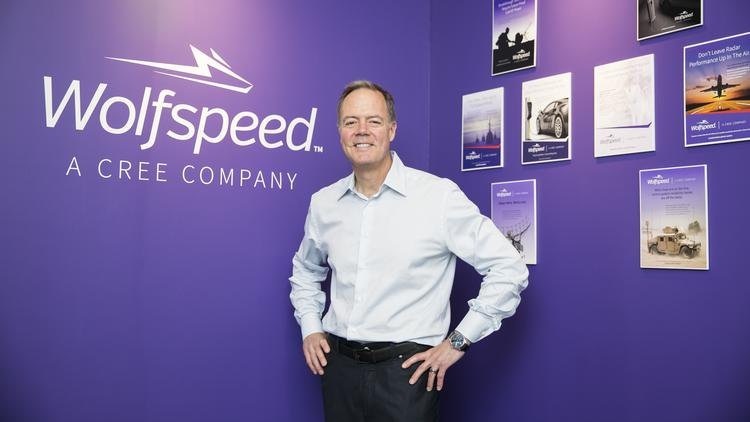
And then there was Wolfspeed

As Cree sells its lighting business, chief executive, Gregg Lowe, tells Compound Semiconductor, what will happen next.
Just last month, Cree revealed it is selling its underperforming Lighting Products business unit to Ideal Industries. The divestiture follows efforts – spearheaded by chief executive Gregg Lowe - to expand production at Wolfspeed and looks set to drive growth across the coming years.
“This gives us the cash to invest in Wolfspeed and establishes us as a pure-play compound semiconductor company focusing on SiC and GaN,” Lowe tells Compound Semiconductor. “The cash will help to fund capacity expansions, including our manufacturing footprint and also our research and development resources.”
“Lighting Products was a completely different channel to market and added complexity to our business,” he adds. “But when you have the entire management team and board of directors focused on being a pure-play compound semiconductor business, this really allows you to double down and re-invest.”
Indeed, since joining Cree in September 2017, Lowe has single-mindedly worked on bolstering Wolfspeed, having grown the business by more than 100%. Key moves include the acquisition of Infineon's RF business and also several long-term SiC supply deals worth more than $500m, including agreements with ST Microelectronics and Infineon.
“We set out to quadruple Wolfspeed revenues to $850m by 2022 and now this [sale] really helps with that,” highlights Lowe. “We have a faster growth profile, higher margins and a cash balance approaching $1 billion.”
What's more, Lowe is adamant that the power and RF focus comes at just the right time. As he points out, thanks to the rapid rollout of 4G and 5G networks, the demand for Cree's GaN-on-SiC RF products is rising.
“This turned on quite quickly over the last two quarters so we're trying to expand capacity very quickly here,” he says. “Of course our Infineon business acquisition here helped us to get a good foot in that market.”
And at the same time, car manufacturer investments in electric vehicles are increasingly gathering momentum. “Since I joined Cree, around $300 billion of investments have been announced and this is really driving the demand for silicon carbide.”
From here on in, Cree will focus on growing Wolfspeed with capacity increases in SiC production being a priority.
So what happens now? Lowe is certain that the Lighting Products divestiture works for every party involved. Ideal Industries gains a 'good platform' to expand its presence in Lighting and Industrial applications. And as he adds: “It's a win for employees in the Lighting business as this will now be the largest division in Ideal and the main focus of this company.”
But clearly for the chief executive, Wolfspeed is the priority. Indeed, in past months Cree has been shifting research and development, crystal growth equipment and capital expenditure from its lighting arm to Wolfspeed, more than doubling capacity along the way.
As Lowe emphasises, cash influx from the latest sale will further grow manufacturing capacity, but Cree continues to talk with potential new silicon carbide suppliers. Given this, more supply deals akin to those of ST Microelectronics and Infineon could well follow.
Meanwhile, in a similar vein to his Infineon RF and power business deal, the chief executive isn't adverse to future mergers and acquisition. Describing these as 'part of Cree's 'toolkit', he says: “Whatever we do we will be focused on growing the Wolfspeed business, and if there is a good merger and acquisition opportunity... well we have used that before.”
Importantly, Lowe also intends to plough more cash into research and development, to develop baseline technologies including silicon carbide crystal growth, wafer fabrication and epitaxy capacities, which as he says will further increase yields and drive down costs.
“We will also cover device developments, applications engineering and field application resources as customers start to transition from silicon to silicon carbide power devices,” he says. “There are some application differences we will need to help customers work through and now we can fund these as well.”
And looking to the future, Lowe believes that higher voltage devices will provide 'interesting application opportunities'. As he highlights, Cree has demonstrated 20 kV devices, but believes that 650 V devices and those rated a little higher than that will continue to hold the company's attention.
“The 650 V to 2000V range is probably the vast majority of the market that we will be going after,” he says. “We want to convert the industry from silicon to silicon carbide and this means expanding our product portfolio, expanding customer reach and enabling new markets to make this transition.”


































